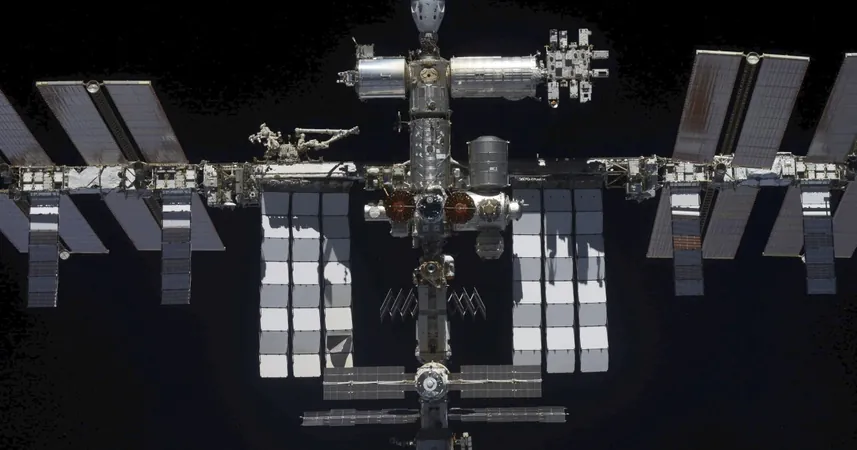
International Space Station Successfully Dodges Potential Collision with Space Debris!
2024-11-20
Author: Arjun
International Space Station Successfully Dodges Potential Collision with Space Debris!
In a critical move to ensure the safety of crew members aboard, the International Space Station (ISS) performed an orbit adjustment on Tuesday, specifically designed to avoid a potentially hazardous piece of space debris.
NASA reported that the maneuver took place at 2:09 p.m. CT, involving a precise firing of the ISS thrusters for a duration of 5 minutes and 31 seconds. This crucial adjustment elevated the station’s orbit, providing a safer margin of distance from debris originating from a defunct defense meteorological satellite that disintegrated in 2015.
Without this timely maneuver, the debris posed a close approach, coming within approximately 2.5 miles of the ISS. The U.S. Space Force described the debris as small, but even tiny fragments can present significant dangers in the high-speed environment of low Earth orbit.
The decision to act was prompted by alerts received on Sunday regarding a “potential conjunction risk.” NASA, in collaboration with the U.S. Space Force and international partners, continually monitored the situation before taking proactive measures. The agency confirmed their ability to respond swiftly to imminent threats, often within hours.
Remarkably, this evasive action did not interfere with the operations of the ISS or the upcoming launch of the Progress 90 spacecraft, which is set to deliver essential supplies to the crew onboard.
The ISS, traveling at an astonishing speed of over 17,500 mph, operates in a congested orbital zone filled with countless satellites and thousands of debris fragments. This incident marks the first time this year that the ISS has had to implement such a maneuver. Since its launch in 1998, the ISS has made a total of 39 course corrections to dodge space debris, showcasing the ongoing risks associated with orbiting spacecraft.
In the realm of space safety, the stakes are high. The Aerospace Corporation emphasizes that even a small piece of debris, comparable in size to a blueberry, can generate an impact likened to that of a falling anvil, carrying considerable energy upon collision. NASA estimated that there are around 9,000 metric tons of debris orbiting Earth, with the U.S. tracking approximately 19,000 individual components of space debris.
While the risk to individuals on Earth from space debris remains low—most pieces burn up upon re-entry—astronauts on the ISS face greater danger, especially during spacewalks. As the debate over space debris management intensifies, international cooperation is essential. Currently, there are no binding regulations governing debris mitigation practices, although several nations and agencies have drafted guidelines aimed at reducing the problem for new spacecraft.
Innovative technologies are also being explored to actively remove existing debris in our skies. As humanity ventures further into space, ensuring the safety of our missions and the security of our orbital environment will be paramount.
Stay tuned as we continue to follow this story and provide updates on space exploration and safety!





 Brasil (PT)
Brasil (PT)
 Canada (EN)
Canada (EN)
 Chile (ES)
Chile (ES)
 España (ES)
España (ES)
 France (FR)
France (FR)
 Hong Kong (EN)
Hong Kong (EN)
 Italia (IT)
Italia (IT)
 日本 (JA)
日本 (JA)
 Magyarország (HU)
Magyarország (HU)
 Norge (NO)
Norge (NO)
 Polska (PL)
Polska (PL)
 Schweiz (DE)
Schweiz (DE)
 Singapore (EN)
Singapore (EN)
 Sverige (SV)
Sverige (SV)
 Suomi (FI)
Suomi (FI)
 Türkiye (TR)
Türkiye (TR)